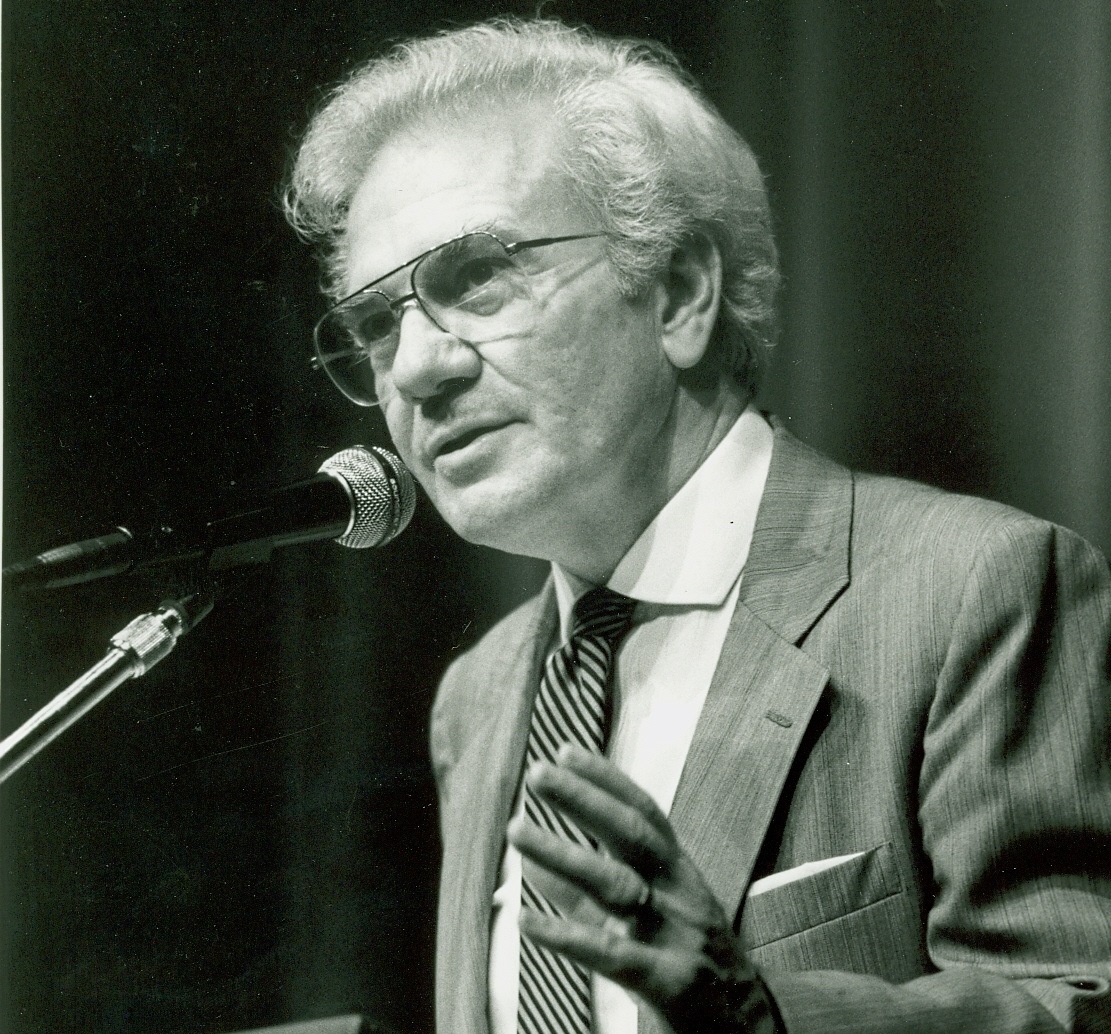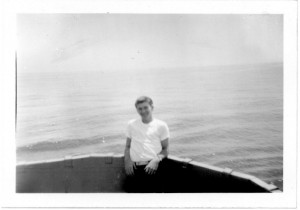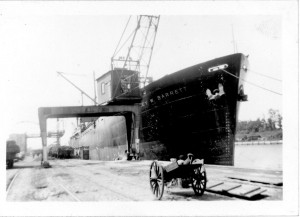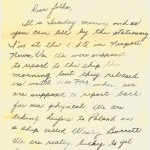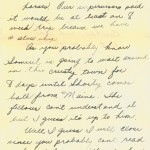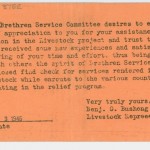Continuing the story of Ernie Boyer’s participation in a humanitarian relief effort after World War II, here are his next four entries as a “seagoing cowboy”:
Tuesday, June 11, 1946 –
Got up at about 5:30 and packed. Ate breakfast and went to Pier X. Sam decided to wait for Bruce so that was one less. We were told we would leave on the Wesley Barrett a liberty ship which took cattle to Danzig, Poland. We reported back at 1:00 P.M. at which time we were injected for Tetnus and [examined] for V.D. The Maritime Commissioner signed us on the ship and we then boarded a launch to the Wesley W. Barrett. We started bedding stalls and really had to work hard. Since we had missed ships supper and hadn’t eaten any supper we were really hungry. All we had to eat was salmon and crackers.
Wednesday, June 12, 1946 –
They started loading the cattle on about 12:30 A.M. and finished about noon today. I didn’t feel too good. I think it was the fish and crackers. We watered and hayed the animals. We set sail for Poland about 7:30 P.M. and about 10:30 P.M. the boat began to rock. Went to bed tired but not seasick.
Thursday, June 13, 1946 –
Got up at six which was our regular rising hour. I began to feel dizzy and so did most of the fellows. I didn’t do much work. Sent my breakfast and dinner overboard. I was alright laying down but when I tried to walk I would get dizzy again. I was lucky though. By the afternoon I was feeling O.K. It [made] me feel better to laugh at the other fellows. A good joke was when Prof. vomited his teeth overboard this afternoon.
Friday, June 14, 1946 –
Feeling good today. Some of the fellows are still pretty sick. It rained today which made it rather gloomy. We were assigned regular places to work. My place is hold 2 with Joe Brechbill, Bert Asper and Nevin Smith. We had a fire Emergency Drill today. Saw another ship.
Images and journal entries taken from a scrapbook of Boyer’s experience (catalog # 1000 0001 4085).
